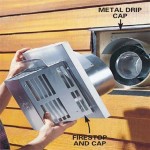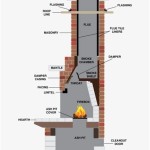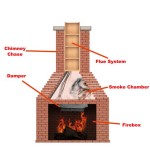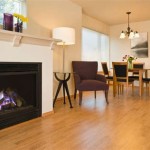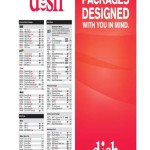Portable Tabletop Fireplaces: A Comprehensive Guide
Portable tabletop fireplaces have emerged as a popular design element for both indoor and outdoor spaces. These compact units offer the ambiance of a traditional fireplace without the permanence, cost, or complexity of installation. They function as decorative centerpieces, providing warmth and a focal point for gatherings. The increasing demand reflects a desire for accessible and adaptable fire features that can be readily integrated into various environments. The versatility, aesthetics, and ease of use of these fireplaces contribute to their appeal.
This article will delve into the specifics of portable tabletop fireplaces, including their operational mechanisms, various fuel options, safety considerations, aesthetic variations, and a comparison against traditional fireplaces. The objective is to provide a comprehensive understanding of these units, enabling informed decisions regarding their purchase and use.
Understanding the Operation of Portable Tabletop Fireplaces
Portable tabletop fireplaces are generally fueled by either gel fuel, liquid ethanol fuel, or isopropyl alcohol. The operational principle is relatively straightforward. Fuel is poured into a designated reservoir within the fireplace unit, and then ignited with a lighter or match. The open flame produces heat and a visual effect mimicking a traditional fire. The design of the unit typically includes a surrounding structure that contains the flame and protects the surrounding surfaces from heat damage. Some models incorporate features that enhance the flame's visual appeal, such as decorative rocks, glass beads, or ceramic logs.
The heat output of a portable tabletop fireplace is limited by the volume of fuel consumed and the BTU (British Thermal Unit) rating of the fuel. These fireplaces are generally not intended as primary heating sources; rather, they provide supplemental warmth and aesthetic value. The duration of the burn time depends on the fuel type, the reservoir size, and the flame intensity. Some models include adjustable flame control features that allow the user to regulate the burn rate and heat output.
The construction material of the fireplace unit significantly influences its safety and durability. Common materials include stainless steel, concrete, tempered glass, and ceramic. Stainless steel offers excellent heat resistance and corrosion protection, while concrete provides a robust and visually appealing aesthetic. Tempered glass is often used for the surrounding walls or shields, providing a clear view of the flame while preventing accidental contact. The design must ensure adequate ventilation to prevent the buildup of hazardous fumes. A stable base is crucial to prevent accidental tipping and spillage of fuel.
Fuel Options: Ethanol, Gel, and Isopropyl Alcohol
The type of fuel utilized in a portable tabletop fireplace profoundly impacts its performance, safety, and environmental footprint. The three primary fuel options are ethanol, gel fuel, and isopropyl alcohol, each with distinct characteristics.
Ethanol, particularly denatured ethanol, is a popular choice due to its clean-burning properties. It produces minimal soot, smoke, or odor when burned properly. This results in a cleaner and healthier environment for users. Ethanol-fueled fireplaces typically offer a longer burn time compared to gel fuel or isopropyl alcohol. The flame characteristics are also considered more visually appealing, resembling a natural wood-burning fire. However, ethanol fuel can be more expensive than other options and requires careful handling due to its flammability. The quality of ethanol is also a crucial factor; lower-quality ethanol may contain impurities that can produce unpleasant odors or smoke.
Gel fuel is another commonly used option. It consists of a thickened alcohol-based mixture that is packaged in canisters. These canisters are placed within the fireplace unit and ignited. Gel fuel offers a convenient and readily available fuel source. It often produces a crackling sound that mimics the sound of a wood-burning fire, enhancing the ambiance. However, gel fuel typically has a shorter burn time compared to ethanol. It can also produce more soot and odor, especially if the ventilation is inadequate. When burnt, the gel often leaves a residue that requires cleaning.
Isopropyl alcohol, while less commonly used in commercially available tabletop fireplaces, can serve as an alternative fuel source. It is readily available and relatively inexpensive. However, isopropyl alcohol burns with a less visually appealing flame compared to ethanol or gel fuel. It also produces more odor and smoke, necessitating good ventilation. The safety concerns related to isopropyl alcohol are significant, as it is highly flammable and can produce explosive vapors. Therefore, its use in tabletop fireplaces is generally discouraged, especially in enclosed spaces or near flammable materials.
Safety Considerations and Best Practices
Safety is paramount when operating any type of fireplace, including portable tabletop models. Proper adherence to safety guidelines can mitigate the risk of fire, burns, and other accidents. Regular inspection and maintenance further ensure safe operation. Ignoring these safety measures can lead to serious consequences.
The primary safety consideration is the selection of a suitable location for the fireplace. It should be placed on a stable, non-flammable surface, away from curtains, furniture, or other combustible materials. Maintaining a safe clearance zone around the fireplace is crucial to prevent accidental ignition of nearby objects. The fireplace should never be left unattended while burning, especially if children or pets are present. Supervision is essential to prevent accidents and ensure that the flame is extinguished properly when not in use.
Proper handling and storage of fuel are also crucial safety measures. Ethanol, gel fuel, and isopropyl alcohol are all flammable substances that require careful handling. Fuel should be stored in a cool, well-ventilated area, away from heat sources and direct sunlight. Always use the fuel specified by the fireplace manufacturer to avoid potential hazards. When refueling the fireplace, ensure that the flame is completely extinguished and the unit has cooled down. Never pour fuel onto an existing flame, as this can create a dangerous flashback or explosion.
In the event of a fire, it is essential to have a readily available fire extinguisher or fire blanket. Familiarize oneself with the proper use of these devices before operating the fireplace. Never use water to extinguish a fuel-based fire, as this can spread the flames. Instead, use a fire extinguisher specifically designed for flammable liquid fires (Class B). Regular cleaning and maintenance of the fireplace unit are also important for preventing potential hazards. Remove any accumulated soot, ash, or debris from the fuel reservoir and the surrounding surfaces. Inspect the unit for any signs of damage or wear, and replace any worn or damaged parts promptly.
Aesthetic Variations and Design Integration
Portable tabletop fireplaces are available in a wide array of styles, materials, and designs, allowing them to seamlessly integrate into various interior and exterior design schemes. The aesthetic appeal of these fireplaces contributes significantly to their popularity as decorative elements.
The materials used in the construction of the fireplace unit significantly influence its visual appearance. Stainless steel offers a sleek and modern aesthetic, while concrete provides a more rustic and industrial look. Tempered glass adds a touch of elegance and allows for unobstructed views of the flame. Ceramic materials can be molded into various shapes and designs, offering a wide range of stylistic options. The choice of materials should complement the overall design of the space where the fireplace will be placed.
The shape and size of the fireplace also play a crucial role in its aesthetic integration. Tabletop fireplaces are available in various shapes, including circular, rectangular, square, and cylindrical. The size of the fireplace should be proportionate to the size of the table or surface where it will be placed. A large fireplace on a small table can appear overwhelming, while a small fireplace on a large table may be visually insignificant. Consider the scale of the surrounding elements when selecting the appropriate size and shape.
The accessories used with the fireplace can also enhance its visual appeal. Decorative rocks, glass beads, and ceramic logs can be arranged around the flame to create a more realistic and visually appealing fire effect. Some models incorporate LED lighting that illuminates the flame or the surrounding area, adding another dimension to the visual display. Consider the overall theme and style of the space when selecting accessories that complement the fireplace.
Portable Tabletop Fireplaces vs. Traditional Fireplaces
Portable tabletop fireplaces offer several advantages over traditional fireplaces, particularly in terms of cost, installation, and portability. However, traditional fireplaces provide a greater heat output and a more authentic fire experience. The choice between the two depends on individual needs and preferences.
The cost of installing a traditional fireplace can be substantial, involving expenses for construction, ventilation, and professional installation. Portable tabletop fireplaces, on the other hand, require minimal upfront investment. They are typically less expensive to purchase and do not require any professional installation. The cost of fuel is an ongoing expense for both types of fireplaces, but the fuel consumption of a tabletop fireplace is generally lower than that of a traditional fireplace.
Traditional fireplaces require extensive installation, including the construction of a chimney and a firebox. This can be a time-consuming and disruptive process. Portable tabletop fireplaces, in contrast, can be placed anywhere on a stable surface without any installation requirements. This makes them a convenient option for renters or individuals who do not want to commit to a permanent fireplace installation. The portability of these fireplaces allows them to be moved from one room to another or even taken outdoors for use on a patio or deck.
Traditional fireplaces typically provide a greater heat output than portable tabletop fireplaces. This makes them a more effective source of heat for larger spaces. However, the heat output of a tabletop fireplace may be sufficient for smaller rooms or for providing supplemental warmth in a larger space. The authentic fire experience offered by a traditional fireplace, with its crackling wood and roaring flames, is difficult to replicate with a tabletop fireplace. However, some tabletop fireplaces incorporate features that mimic the sounds and appearance of a traditional fire, such as crackling gel fuel and decorative logs.

The Portable Tabletop Fireplace Hammacher Schlemmer

14 5 Hoher Tragbarer Tischkamin

Table Top Fire Pit Portable Bio Fireplace For Home Terrace

13 5 Tall Portable Tabletop Fireplace

Diamond Tabletop Fire Bowl Pot 14 5 Tall Portable Fireplaceclean Burning Bio Ethanol Ventless Fireplace For Indoor Outdoor Patio Parties Events Newegg Com

Portable Indoor Fire Desktop Burner Desk Outdoor Centerpiece Burning Tabletop Fireplace For Home Living Room Patio Party Festive Ca

Propane Portable Tabletop Fireplace 10 Inch Round Gas Fire Bowl 000 Btu With Lava Rocks For Garden Patio Com

Tabletop Fire Pit Table Top Bowl Rubbing Portable Fireplace Concrete Mini For Indoor Outdoor Yahoo Ping

Tabletop Fireplace Portable Fire Bowl Pot Arttoreal

Northlight 17 75 Bio Ethanol Ventless Portable Tabletop Triple Fireplace With Flame Guard Target


